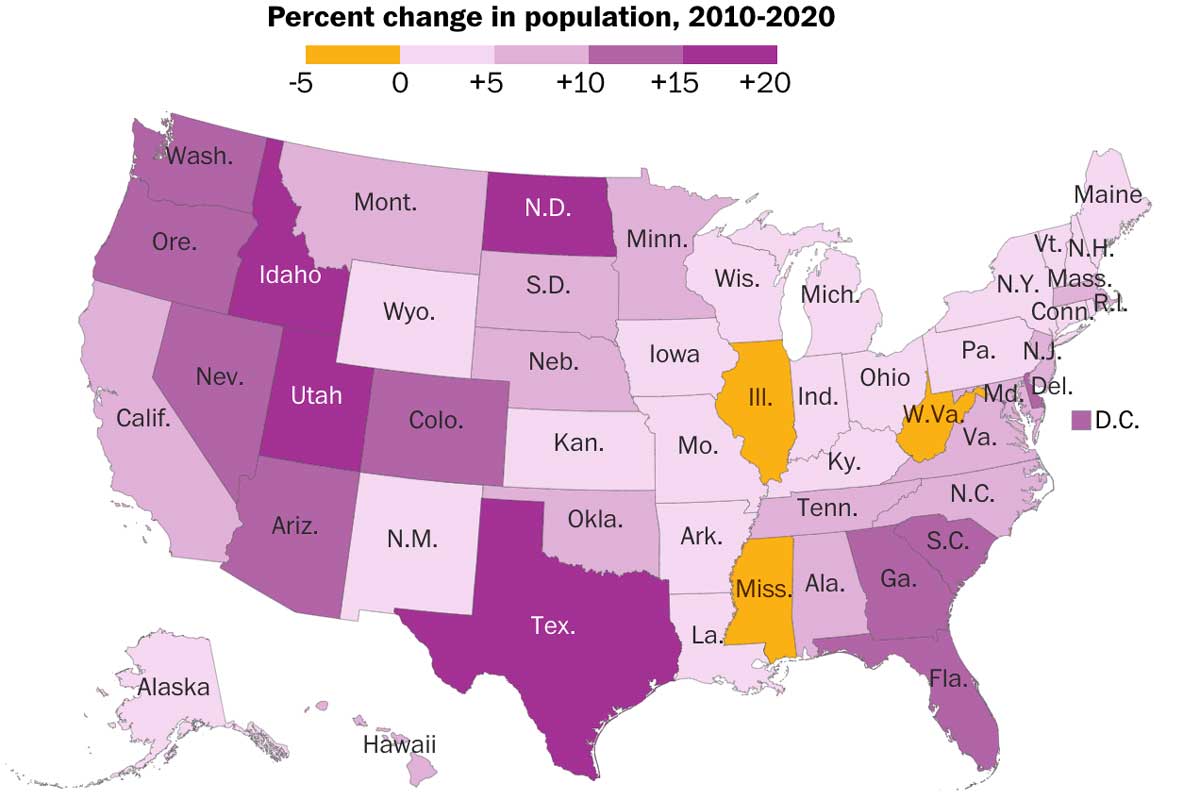The most interesting result of the pandemic is that more and more people are willing to move to another place. Though pandemic is not the only reason that people are moving, it has increased the figures where only 30% of people were planning a move in 2020, 56% of Americans are planning to move in 2021. The experts movers claim that Moving is a very familiar experience for all of us as we all move at least once in our lifetime. Residential mobility is a universal activity and there can be various reasons and types of moves. Along with the effect of Covid-19, there are more possible reasons for a move, they add. To get more information about movers at iMoving, click here.
Residential Mobility Dynamics
If we consider the data released by the demographic survey program American Community Survey, over 40 million Americans move per year and that means almost 13% of the American population move each year. As per the data released by the Current Population Survey (CPS) conducted by the U.S. Census Bureau for the Bureau of the Labor Statistics in 2019, almost 65% of moves are local moves whereas moves within the same state are almost 17% of the total moves. Interstate moves are recorded at 14% while intercountry moves are only 4% of all the moves.
Reasons and Types of Moves
Though the moves were dramatically high in the largest, expensive, and over-populated cities in 2020, the pandemic is not the only reason that people move. People move for several reasons and in the current situation, after the pandemic, housing is the second most common reason that people move though generally, it is the primary reason. The data report released by CPS states that almost 40% of the moves happen for housing-related reasons, 21% are job-related, 27% are due to family issues, and remaining 12% moves happen for some other reason. This data can be further discussed too as most of the intercity moves are job-related and local moves happen due to housing reasons. And most elderly people move for family reasons no matter if it is an intercity or interstate move.
Preferred States
Though only one-fifth of all moves are interstate moves, these moves are important in terms of demographic and economic change. Florida, Texas, and other Sunbelt states have always been migrants’ first choice as over 100,000 people move per year to these areas since 2010. Along with Sunbelt states, Pacific Northwest and western states are also welcoming many migrants currently and Colorado tops the list of cities of these states. We see more domestic migration from Midwest and Northeast American states but this doesn’t necessarily mean population loss in these states as natural population growth sometimes covers up the loss made by domestic migration. Many Americans are leaving large cities and moving to suburban areas but this definitely doesn’t mean that it is an urban exodus.
The states that have seen the most growth in 2020 are Arizona, Colorado, Idaho, North Carolina, Florida, and Texas. People are moving to Southern states as many companies have shifted to these states and job growth is attracting more and more people to these places. Though warmer weather is another big reason for people to migrate to these areas, open space, and rich social culture can also not be denied as popular factors. Midwest American states are experiencing many outbound moves due to harsh weather conditions and also people are not very happy with the public policy in Illinois so they prefer moving out to other states for a better quality of life.
Mobility Declined as Compare to 1900s
The residential mobility rate was much higher in the 1900s and it is ever-declining since the 1980s. Though interstate migration has declined to a greater extent, local moves have also been declining. Residential mobility rates have been stabilized, though a sharp decline in residential mobility is seen in young adults across past generations. US migration rates are at historic low levels even after an increase in the past few years. Population moving from urban to suburban areas is a global scenario currently and the US is no exception.
A dramatic change in labor dynamics, housing affordability, and demographic change are some of the reasons that have played a significant role in declining residential moves across America. Most people prefer staying at one place as they age and it adds to the declining residential mobility. A great rise in housing prices is another reason that people are not moving into unaffordable places and stay at their current location. Dual earner households also decline mobility as both partners may not get an opportunity at the relocated location and people are not ready to take a chance. In the current pandemic situation, people are working from home and since ever remote workers have a lower mobility rate.
Impact of Covid-19
Covid is also having a great impact on the overall residential mobility rate. Though the pandemic is still not over and we cannot understand the exact impact of it on moving, we still can expect a rise in the mobility rate once quarantines and isolations will end. Residential mobility may increase as people will lose jobs and would prefer to move to cheaper housing places. Residential mobility may also be spiked due to foreclosures and employee layoffs.
Mobility may be adversely affected too due to the pandemic as people will be less likely to buy new property. Uncertain economic growth is also a factor that people may refuse to invest in real estate. Many companies have declared that they will be working from home for a long period even after the government will lift restrictions and this will also affect the residential mobility rate adversely as job-related moves will cease for a while.
If we follow the current trends, people in America are moving for job-related and housing-related reasons. Loss of jobs at one place and availability at some other place is one major reason that people are moving even during the pandemic. Due to a decline in jobs and increments, housing affordability is becoming a challenge for some people and they are moving out to some affordable places.












